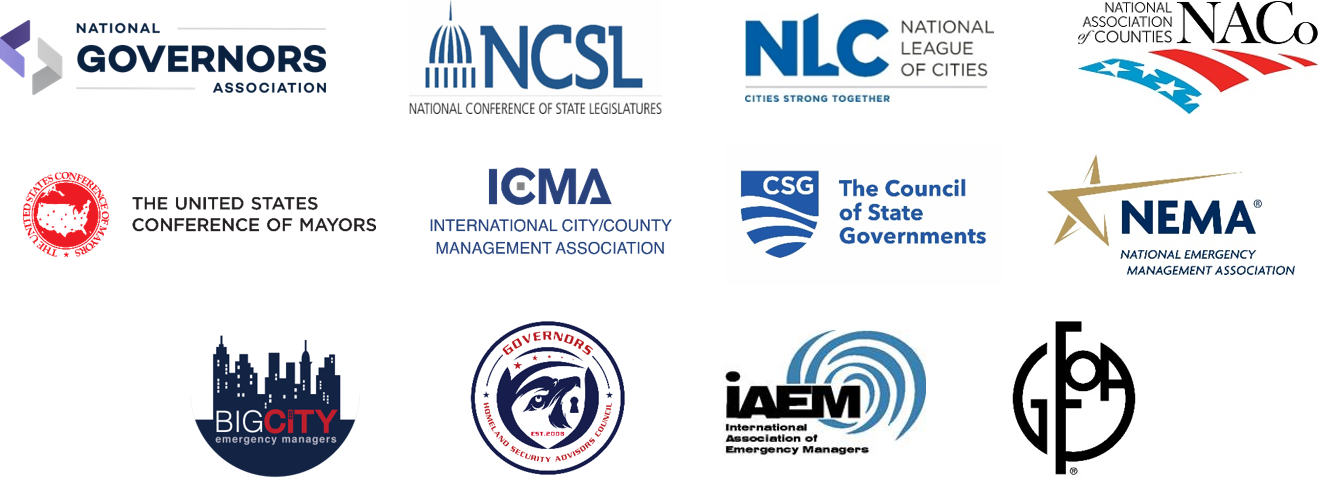
March 5, 2021
Mr. Bob Fenton, Acting Administrator
Federal Emergency Management Agency
500 C Street, SW
Washington, D.C. 20024
Dear Acting Administrator Fenton:
On behalf of our collective organizations, we write to express our concerns regarding FEMA’s Notice of Proposed Rulemaking titled “Cost of Assistance Estimates in the Disaster Declaration Process for the Public Assistance Program.”
While we understand the need for FEMA to periodically review disaster policy, the time and manner in which these changes have been proposed will unduly burden state, territorial and local governments as they continue responding to and recovering from disasters, both COVID and non-COVID related. We respectfully request that FEMA delay moving ahead with this proposed rule until state and local economies stabilize and the essential consultation between FEMA, states, territories and localities has occurred.
The proposed rulemaking does not properly account for the impacts of the COVID-19 pandemic. Furthermore, the rulemaking only utilizes data through 2018. Since that time, COVID-19 has negatively impacted the economies of communities across the nation in varying degrees. FEMA has a responsibility to delay this rule until further consideration can be given to the economic impact of this “new normal” on states, territories and localities.
The proposed rule is deficient in several areas. First, raising the threshold for Public Assistance (PA) would inadvertently also reduce mitigation funding and other federal programs, thereby creating a vicious cycle of not prioritizing preparedness for the next event. Both the Hazard Mitigation Grant Program (HMGP) and Building Resilient Infrastructure in Communities (BRIC) are percentage-based programs calculated against disaster costs. A reduction in spending for PA would have a direct and significant impact on the funds available to help protect communities through mitigation programs. Given the oft cited $6 to $1 return on investment from mitigation spending, the unintended consequence of higher thresholds would have a direct impact on mitigation programs. Limited usage of PA programs would also impact eligibility for programs such as the Community Development Block Grant.
Second, utilizing the Total Taxable Resources (TTR) metric is inherently inequitable as it does not reflect the reality of a state’s ability to tax those actual resources. It furthermore does not measure whether those resources are already taxed and at what rate. Therefore, even though a state may measure at the higher end of the TTR scale, if they already tax those resources at a rate above a national average, it could put a state in the position of creating a direct corollary between raising taxes and assisting those most in need after a disaster.
Finally, in the interest of building a strong partnership in this effort, we offer the following points for consideration to help achieve the goal of this proposed rulemaking:
- Limit adverse impacts to states, territories, and localities by using a phased-in approach over a long period of time when considering an adjustment to the per capita indicator. This approach will allow states to plan long-range. Additionally, this process must include a robust federalism consultation.
- Create a standardized method for weighing localized impacts and ensure states have insight as to how FEMA applies their evaluation and recommendation to the President.
- Reevaluate the size and scope of FEMA’s response. A December 2014 report (GAO-15-65) by the Government Accountability Office (GAO) found combined costs for FEMA and mission assignments can consume nearly 20 percent of the Disaster Relief Fund. This amount dwarfs the mere five percent afforded states for the same activities.
Thank you for your consideration and we appreciate your continued partnership on this important issue.
Sincerely,
- National Governors Association
- Big City Managers Emergency Managers
- Government Finance Officers Association
- Governors Homeland Security Advisors Council
- International City/County Management Association
- International Association of Emergency Managers
- National Association of Counties
- National Conference of State Legislatures
- National Emergency Management Association
- National League of Cities
- The Council of State Governments
- United States Conference of Mayors












